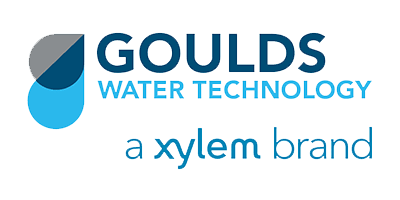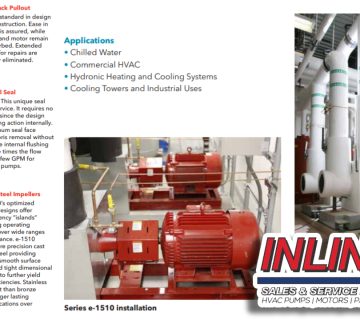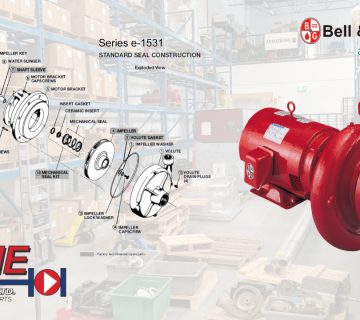The Importance Of Pump Alignment
Pump alignment is the transmission of power from a motor to a pump which is achieved by connecting the motor shaft to the pump shaft, either directly or through a coupling of some type. Misalignment can occur in three ways:
- Radial (offset or parallel) misalignment: The centerlines of the two shafts are parallel but offset.
- Axial (or end float) misalignment: The two shafts are aligned but one (or both) axles are prone to in/out movement along the centerline.
- Angular misalignment: The centerlines of the two shafts are not parallel.
If these problems are not corrected, a system may suffer from a number of problems including the early failure of the pump or motor. Shaft misalignment can cause premature wear of a pump’s seal, packing, shaft, and bearings. This can then lead to excessive leakage and the system as a whole may exhibit excessive vibration and noise, reduced efficiency, and increased power and maintenance costs.
Centrifugal pumps used in petrochemical, chemical and refinery applications are regularly checked for alignment during installation, at frequent intervals during operation, and after service and maintenance.
How are Pumps and Motors Secured?
To maintain good alignment, it is important to minimize vibrations by securing the pumping system to sound foundations. Industrial pumps are normally bolted directly to a machined baseplate and other equipment is aligned and secured to it. The entire assembly is sited on a concrete foundation and affixed with epoxy or cement grouting. When constructed properly, overall vibrations can be substantially reduced because of the damping effect of the foundation mass. As a general rule, foundations should be at least three times the mass of the pumping system for centrifugal pumps and five times for reciprocating pumps.
When Should Alignment be Checked?
 Manufacturers normally carry out a preliminary alignment test prior to installation. Positioning of the system on its foundation, and then grouting and the connection of piping may introduce unwanted stresses which affect the alignment. Further, during the early days of operation, thermal expansion and contraction can also cause movement in the bearings which affects alignment.
Manufacturers normally carry out a preliminary alignment test prior to installation. Positioning of the system on its foundation, and then grouting and the connection of piping may introduce unwanted stresses which affect the alignment. Further, during the early days of operation, thermal expansion and contraction can also cause movement in the bearings which affects alignment.
Alignment should therefore be checked carefully and repeatedly throughout installation, during the early days of operation, following maintenance or repairs, and scheduled periodically. Shaft alignment should also be monitored during the connection of any pipework. All components must be supported and introduce no stresses or strains on any other parts of the system.
If the system operates at temperature, alignment should be checked with the system filled with liquid and, if appropriate, at temperature because of the likelihood of thermal expansion.
The Importance Of Pump Alignment
Proper pump alignment is a critical aspect of ensuring efficient and reliable operation in any machinery or industrial system. In my blog post, I will delve into the significance of pump alignment and why it should not be overlooked.
- Enhanced efficiency: When pumps are misaligned, they can lead to increased energy consumption as the motor works harder to compensate for the misalignment. Correct alignment ensures that the pump operates at its optimal efficiency, saving energy and reducing operational costs.
- Extended equipment life: Misaligned pumps can cause excessive wear and tear on bearings, seals, and couplings, leading to premature failure of these components and, ultimately, the pump itself. Proper alignment helps in distributing loads evenly, reducing stress on the equipment and prolonging its lifespan.
- Reduced maintenance costs: Regular maintenance and repairs due to misalignment issues can be costly and time-consuming. By ensuring accurate alignment, you can minimize the need for troubleshooting and repairs, saving both time and money in the long run.
- Improved operational reliability: Pump misalignment can result in vibrations, noise, and other operational issues that can affect the overall performance of the system. Correct alignment helps in reducing these issues, ensuring smooth and reliable operation.
- Safety considerations: In some cases, misaligned pumps can pose safety risks to personnel working in the vicinity. Vibrations or unexpected failures due to misalignment can lead to accidents or injuries. Proper alignment helps in maintaining a safe working environment for all.
- Environmental impact: Inefficient pump operation due to misalignment can lead to unnecessary energy wastage, increasing the carbon footprint of the industrial system. By aligning pumps correctly, you can contribute to environmental sustainability efforts by reducing energy consumption.
In conclusion, pump alignment is a fundamental maintenance practice that plays a crucial role in the performance, reliability, and efficiency of industrial systems. By investing time and resources in ensuring accurate alignment, companies can reap the benefits of improved efficiency, extended equipment life, and cost savings in the long term. Proper pump alignment is not just a maintenance task; it is a strategic investment in the overall operation and success of an industrial facility.

 Armstrong Pumps
Armstrong Pumps Bell & Gossett
Bell & Gossett Taco Pumps
Taco Pumps Goulds Water Technology
Goulds Water Technology Grundfos Pumps
Grundfos Pumps Wilo & Scot Pumps
Wilo & Scot Pumps Boilermag XT magnetic filter
Boilermag XT magnetic filter Hoffman Specialty
Hoffman Specialty John Crane
John Crane McDonnell & Miller
McDonnell & Miller Heat Exchangers
Heat Exchangers B&G Power Packs
B&G Power Packs Weg Motors
Weg Motors TechTop Motors
TechTop Motors US Motors & Nidec
US Motors & Nidec Baldor Motors
Baldor Motors SKF Motor Bearings
SKF Motor Bearings Motor Repairs
Motor Repairs













